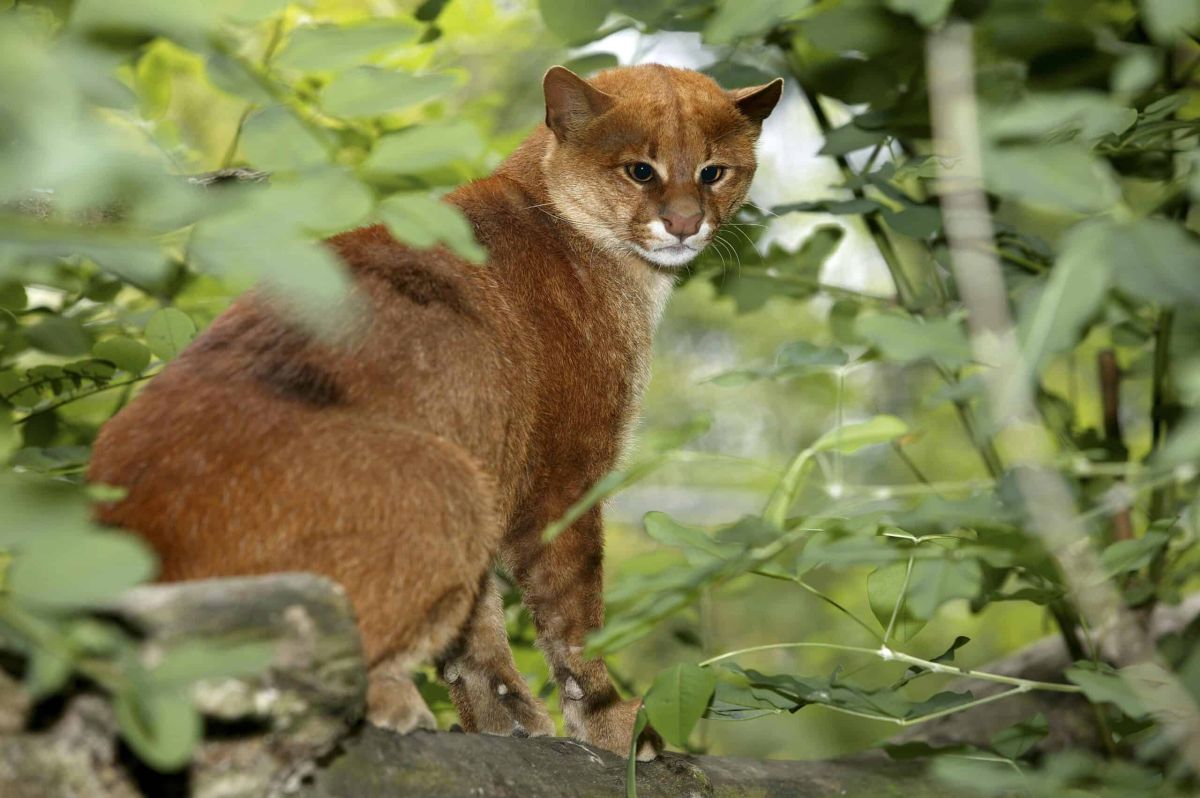The Jaguarundi: A Fascinating Feline of the Americas

The jaguarundi (Herpailurus yagouaroundi) is a small, elusive wild cat that captivates the imaginations of wildlife enthusiasts and researchers alike. Known for its sleek, elongated body and unique behavioral traits, this feline is often overshadowed by its more famous relatives, such as the jaguar and the cougar. Nevertheless, the jaguarundi holds a significant place in the ecosystems of the Americas and offers intriguing insights into the adaptability of wildlife.
Physical Characteristics
The jaguarundi has a distinct appearance that sets it apart from other wild cats. Its body is slender and elongated, with a coat that varies in color from a rich dark brown to a warm gray or reddish hue. Unlike many domestic cats, jaguarundis lack spots or stripes, giving them a more uniform appearance. They typically weigh between 10 to 20 pounds and can measure up to 30 inches in length, not including their long, tapering tail, which can add another 20 inches.
One of the most remarkable features of the jaguarundi is its head, which is smaller in proportion to its body compared to other felines. The ears are also relatively short and rounded, enhancing their streamlined look. Their sharp, retractable claws and keen eyesight make them adept hunters, primarily preying on small mammals, birds, and reptiles.
Habitat and Distribution
The jaguarundi is primarily found in the forests, brushlands, and grasslands of Central and South America, from southern Texas in the United States down to the northern portions of Argentina. They are highly adaptable and can thrive in diverse environments, including tropical rainforests, arid scrublands, and mountainous regions.
Unfortunately, habitat loss due to deforestation and agricultural expansion poses a significant threat to their populations. As their natural environments diminish, jaguarundis are increasingly forced into closer proximity with human settlements, leading to conflict and further challenges for their survival.
Behavior and Diet
Known for their elusive nature, jaguarundis are primarily solitary animals. They are also known for their unique vocalizations, which can include a range of sounds from chirps to whistles, making them distinctive among felines. Unlike many big cats that prefer to hunt at night, jaguarundis are known to be more diurnal, often venturing out during the day to hunt and explore.
Their diet predominantly consists of small mammals, such as rodents and rabbits, but they are also opportunistic feeders who will take birds, reptiles, and even fish when available. Their agility and speed make them skilled hunters, capable of swiftly navigating through their habitats.
Conservation Status
The International Union for Conservation of Nature (IUCN) currently lists the jaguarundi as “Least Concern,” though populations can vary significantly across its range. The greatest threats to its survival include habitat loss, hunting, and road mortality. Additionally, because they are small and elusive, jaguarundis often face challenges in being effectively monitored or studied in their natural habitats.
Conservation efforts aimed at protecting their habitats and promoting coexistence with human populations are vital to ensuring the survival of this unique species. Awareness and education about the ecological role of jaguarundis can also foster a more profound appreciation for wildlife conservation.
Conclusion
The jaguarundi may not have the same level of recognition as some other wild cats, but it is a remarkable creature with unique characteristics that contribute to the biodiversity of its environments. As wildlife enthusiasts and conservationists continue to shed light on the importance of all species, the jaguarundi serves as a reminder of the intricate connections within ecosystems and the need for sustainable measures to protect wildlife habitats. Understanding and supporting the plight of the jaguarundi can help safeguard the delicate balance of nature in the Americas and beyond.



